
Washing and scouring natural fibers
Washing and scouring are inseparable parts of the natural dyeing process for those aiming for the best results. Before mordanting and dyeing, it is important to clean the fibers from various oils, waxes, starch, pectic substances, dirt, and other particles that will otherwise act as a barrier between fibers and mordants or dyes. Such a situation may result in uneven or lighter colors or low quality results, for example, naturally dyed fibers may have lower resistance to rubbing or may not be lightfast. That's why scouring is an important step which should not be ignored.
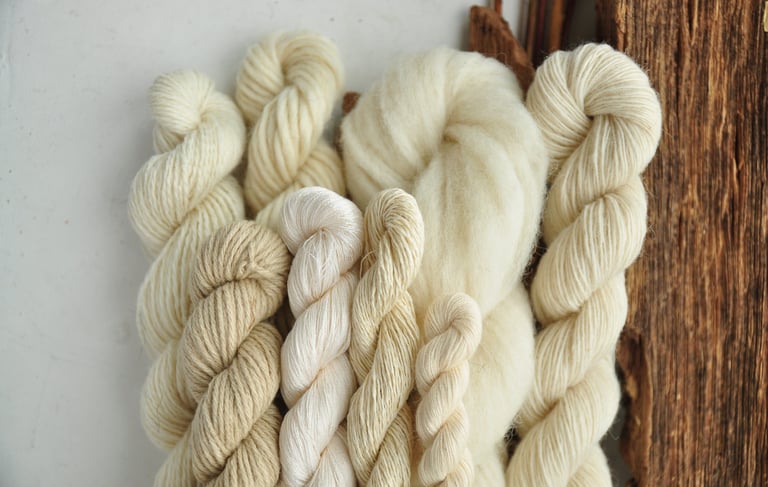



WOOL
There are dozens of different types of wool, each with its own properties and appearances. However, most of them need to be scoured and washed before natural dyeing. The main reasons for scouring wool include removing natural dirt, lanolin, and various substances added during production processes.
Supplies:
400 g wool
16-20 l water
1 teaspoon neutral detergent or 2 teaspoons dishwashing liquid
1 teaspoon water softener if you are using hard water (optional)
Note: For 100 grams of wool, you can use 0.25 teaspoons of detergent or 0.5 teaspoons of dishwashing liquid. Optionally, you can also add 0.25 teaspoons of water softener. Due to the difficulty in measuring such small quantities, I recommend scouring larger batches of wool.
Scouring process:
Fill a stainless steel or another non-reactive pot with room temperature water.
Add the ingredients and stir well.
Add the wool and carefully stir.
Slowly heat to 60°C. Maintain this temperature for about 1 hour. Do not agitate the wool when the temperature exceeds 35-40°C.
Turn off the heat and let it cool to room temperature.
Remove the wool and gently squeeze. Rinse carefully in room temperature water. Continue changing the water until the rinse water is clear.
You can mordant or dye the wool while it's still wet, or let it dry and store for later. For storage, remember to label it as “scoured”.
Additional notes and tips:
If the wool is especially dirty then you may soak it overnight with a bit of detergent before scouring.
If, after scouring, the wool still looks dirty or feels greasy, you can repeat the scouring process with clean water and fresh ingredients.
You may adjust the quantity of ingredients given above based on your needs and the wool you are working with.
If your wool looks really clean and doesn't feel greasy, you may not need to scour. Simply soak it in water with a bit of detergent and then rinse until the water is clean.
Whether in the form of fleece or yarn, most wool is a delicate fiber that should be handled with care.
Wool can be felt when agitated in hot temperatures, so it's best to stop stirring once the temperature reaches 35-40°C. If the wool floats above the water surface or if any other issues arise at higher temperatures, you can gently push it down. However, try to avoid excessive agitation to prevent felting.
Wool can felt or become harsh with sudden changes in temperature, especially when transitioning from hot to cold. It's best to avoid such situations and use water of a consistent temperature when washing wool. In my experience, wool can become harsh if it is washed in too cold water, such as 10-15°C.
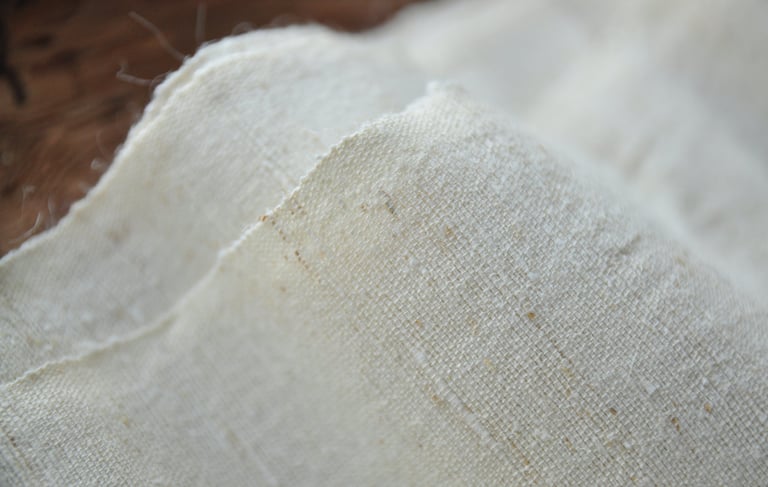



CELLULOSE FIBERS
In the textile industry, various methods are used to process cellulose fibers, including steaming, softening, stiffening, and impregnation. Additional materials like stiffeners or oils are also applied during yarn spinning and fabric weaving. These additives, combined with the natural properties of cellulose fibers, can prevent natural dyes from adhering well to the fibers. As a result, the final color might be uneven, lack brightness, or be less resistant to factors like washing and sunlight. Sometimes, at first glance, it might seem that such fabrics had been dyed perfectly. However, if they weren't scoured, there's a higher likelihood that the colors will fade and rub off more quickly.
Unfortunately, the processes and additives used in textile processing are not always indicated on yarn or fabric labels, making it challenging to determine how to prepare such fibers for dyeing. This recipe provides standard information that you can adjust to suit your needs.
Supplies:
100 g cellulose fibers (cotton, linen, hemp, nettle, etc.)
1 teaspoon laundry detergent
5-8 g soda ash (sodium carbonate, washing soda)
4-6 l of water for fleece and yarn or twice as much for fabrics, garments, and other textiles.
Scouring process:
Dissolve soda ash in a small jar of water.
Fill a stainless steel or another non-reactive pot with water, which can be hot or cold.
Add the laundry detergent and the dissolved soda ash to the pot. Stir well.
Add the cellulose fibers and stir well.
Raise temperature to 90-100°C. Maintain this temperature for around 1-2 hours. Stir from time to time.
Turn off the heat and let it cool down.
Remove the fibers and gently squeeze. Rinse carefully in room temperature water. Continue changing the water until the rinse water is clear.
You can mordant or dye the fibers while they are still wet, or let them dry and store for later. For storage, remember to label it as “scoured”.
If the scouring water is dark yellow or even brown, you can repeat the scouring process with clean water and fresh ingredients.
Additional notes and tips:
Heavyweight fabrics can be scoured for a longer time, for example, 3-4 hours depending on the fiber. Very lightweight and delicate fabrics might be scoured for a shorter period, such as 1 hour.
If you are working with the same fabric often and always notice that the scouring water is almost clear, then you may use less soda ash and detergent and scour for a shorter time to save energy and supplies. If you always notice that the scouring water turns very dark, then you may use more soda ash and detergent. In addition, you may increase the scouring time.
If possible, scour different cellulose fibers separately. This way you may be able to select the best recipe for each fiber.
If you are using hard water to scour linen, then you may use a bit of water softener.
If you are using hard water to scour hemp, then you may rinse it in water with a bit of white vinegar after the scouring process is complete.
Usually, cotton contains more substances (like pectic substances, oil, and wax) that need to be cleaned, so this fiber may require more soda ash and a longer scouring time than other cellulose fibers.
Use stainless steel, enamel, or other non-reactive pots. Make sure that they are thoroughly washed and that enamel pots are not chipped. If possible, dedicate one or two of your pots specifically for scouring and other clean processes that do not involve iron sulfate or very strong dyes, such as indigo or madder.
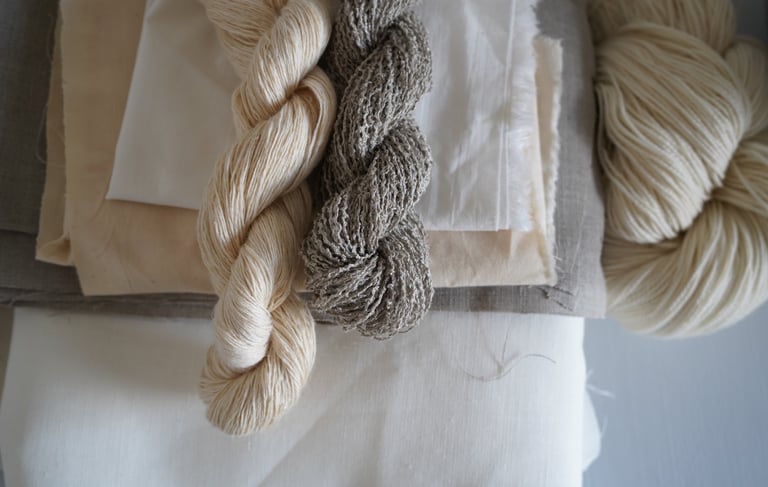

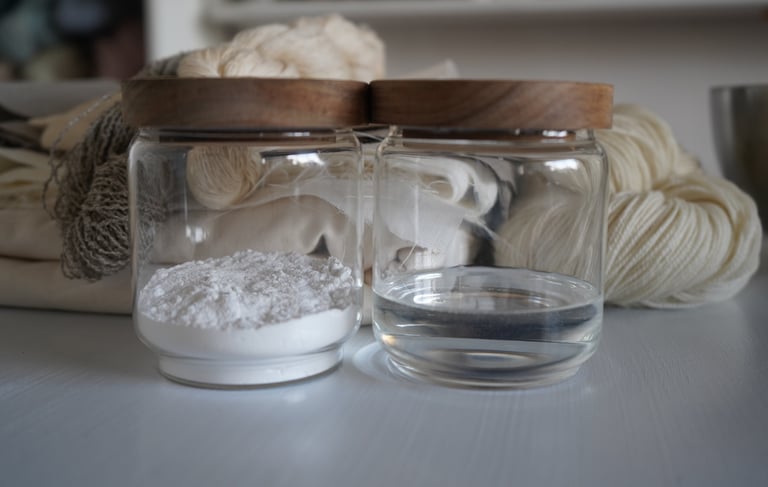


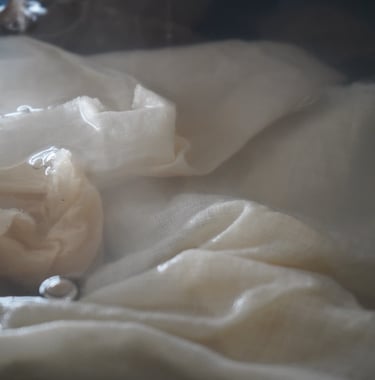
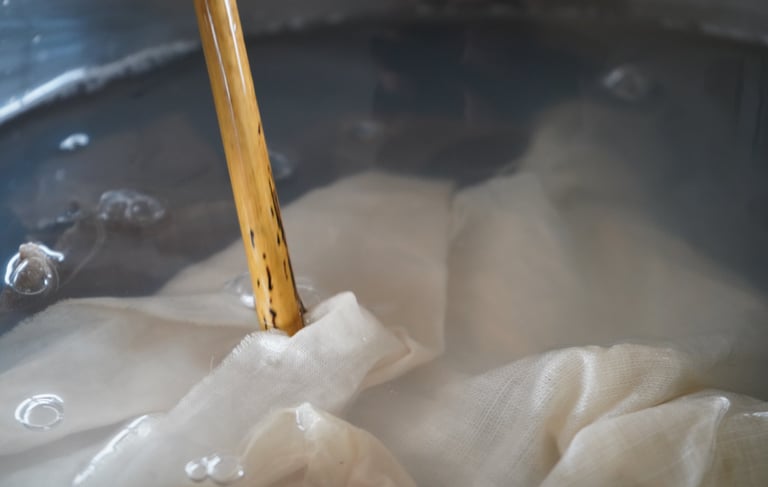

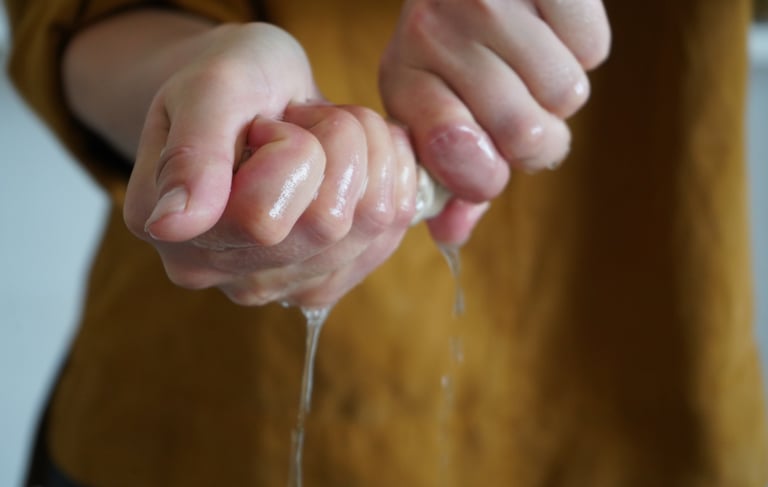

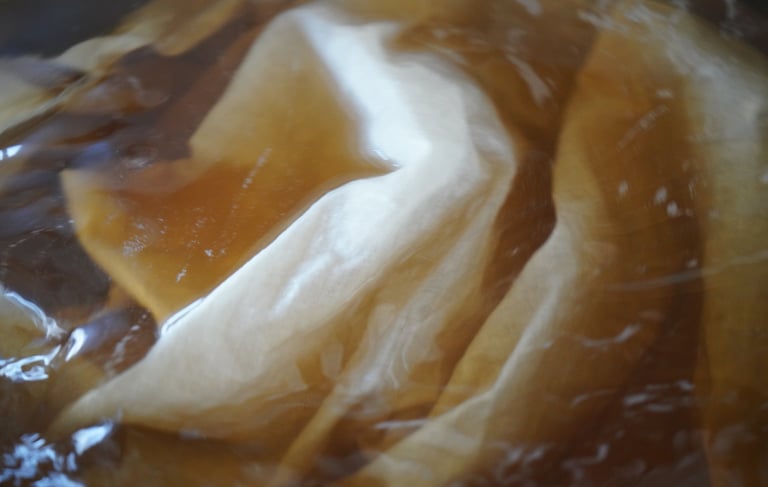

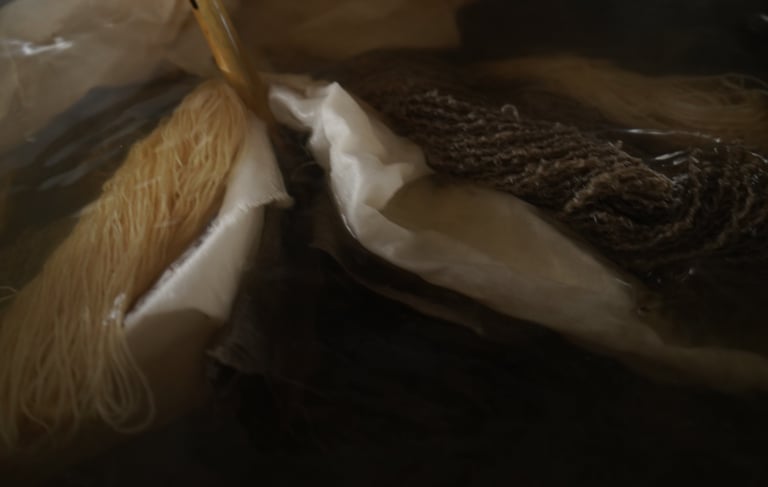


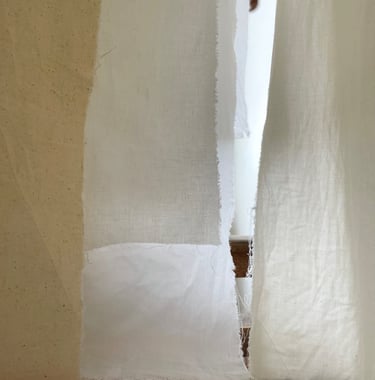
© Forests & Meadows 2024
Vilnius, Lithuania
LT-08200
hello@forestsandmeadows.com